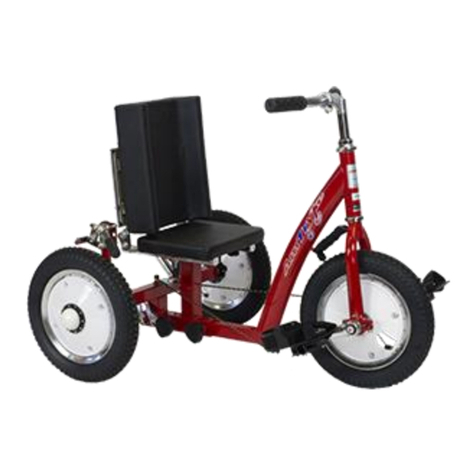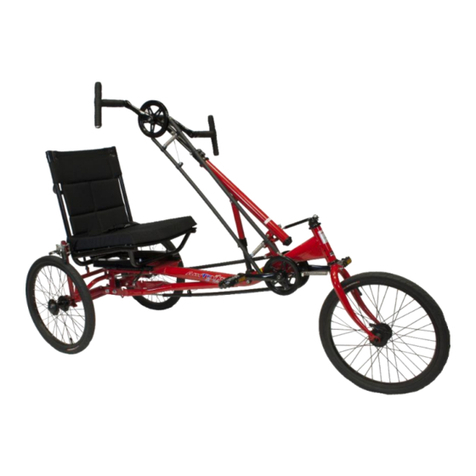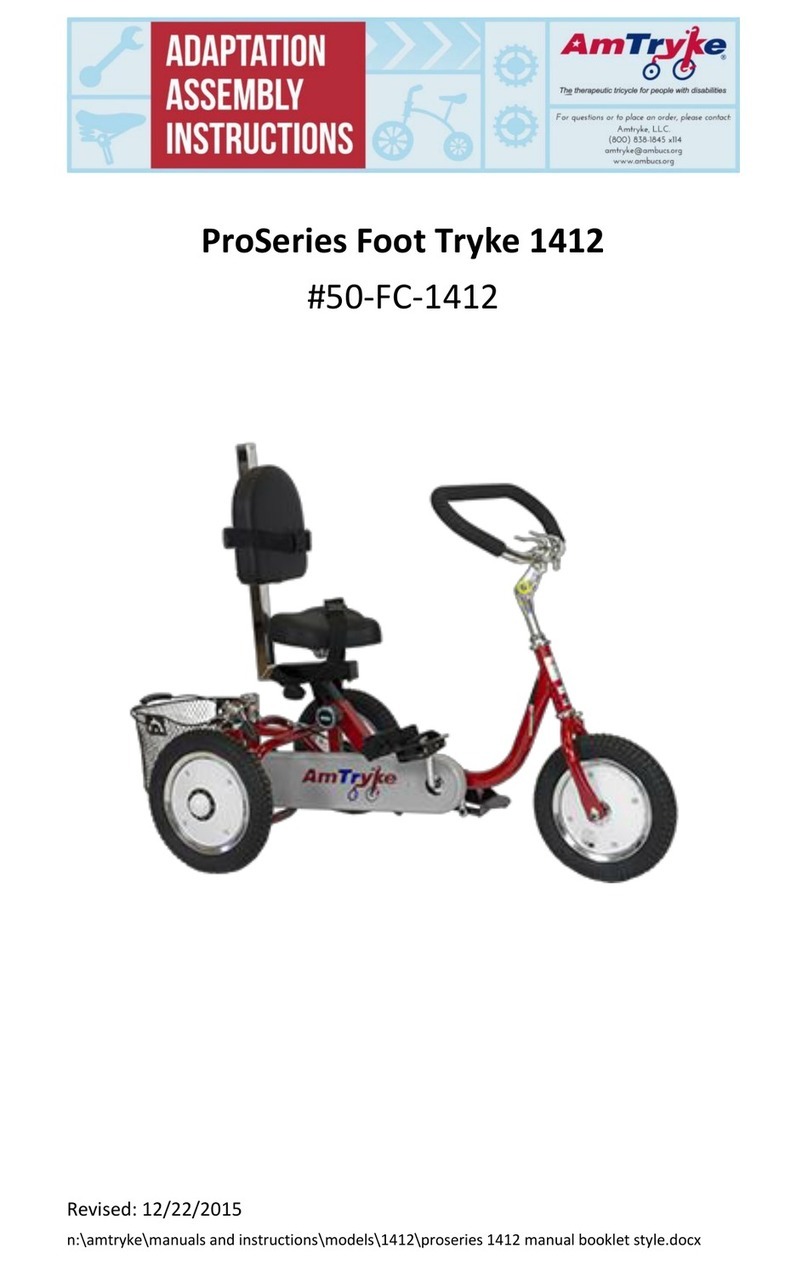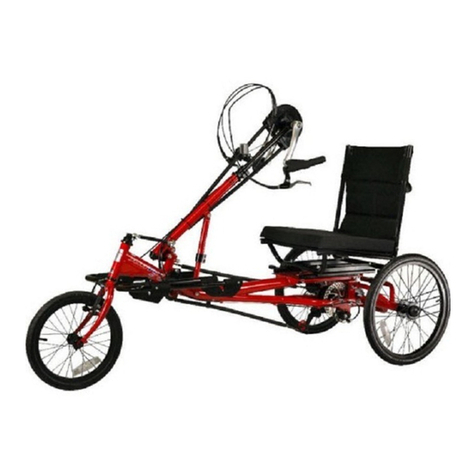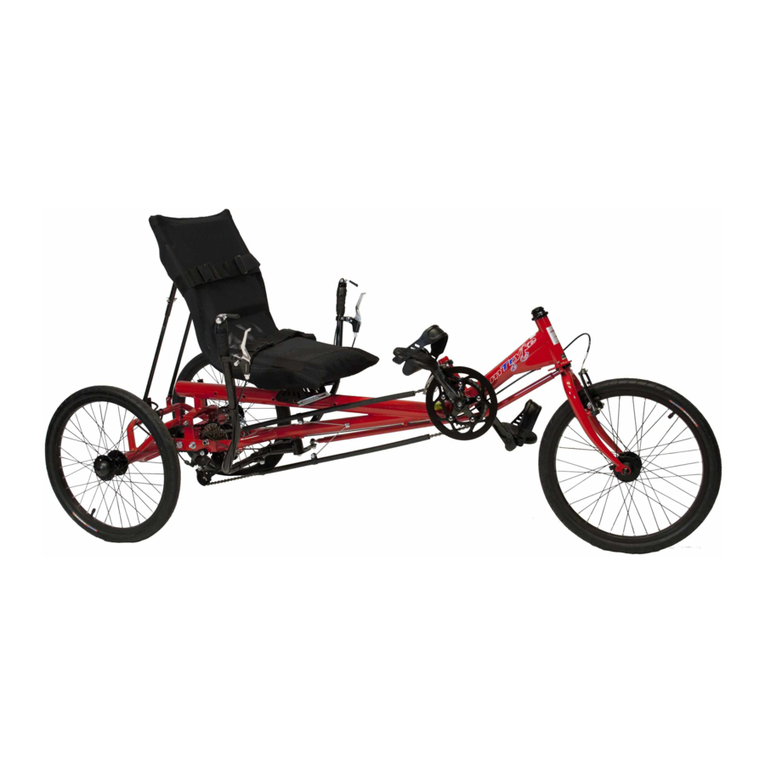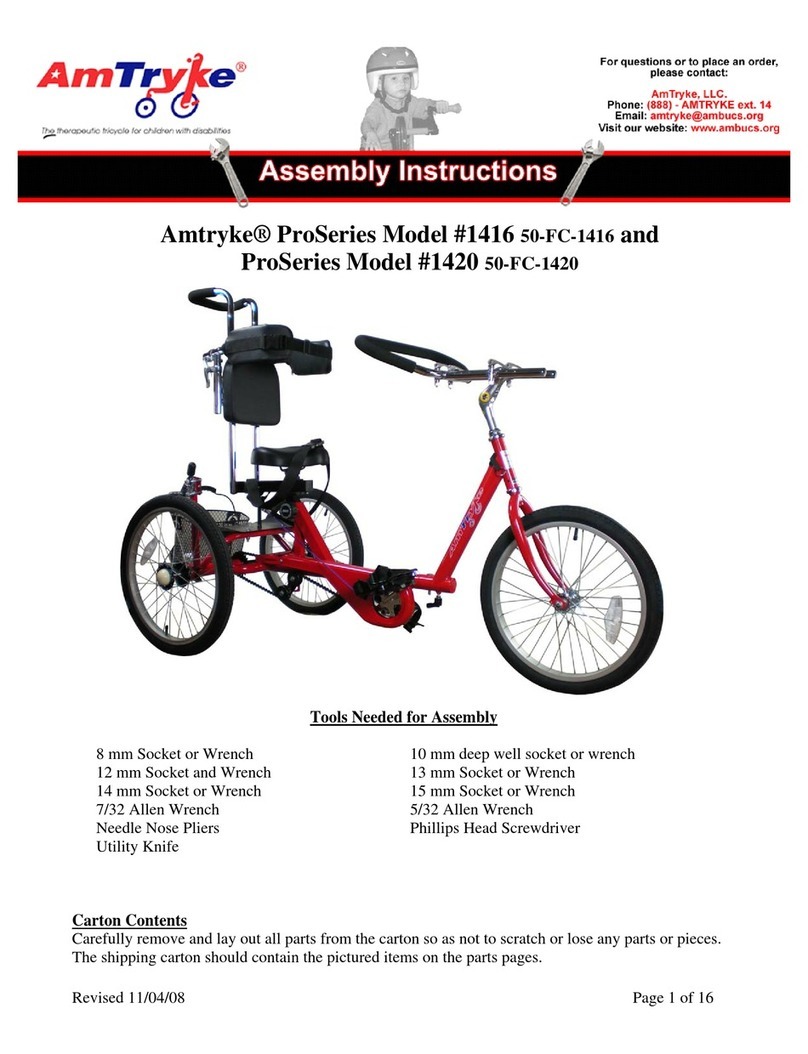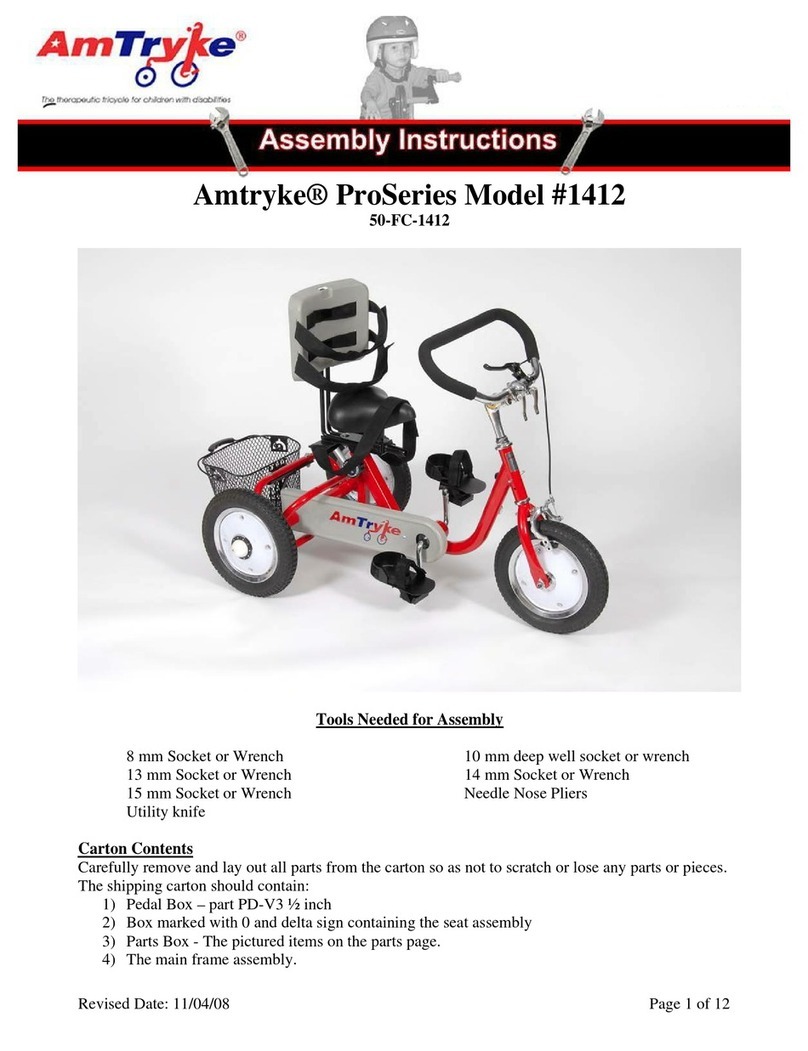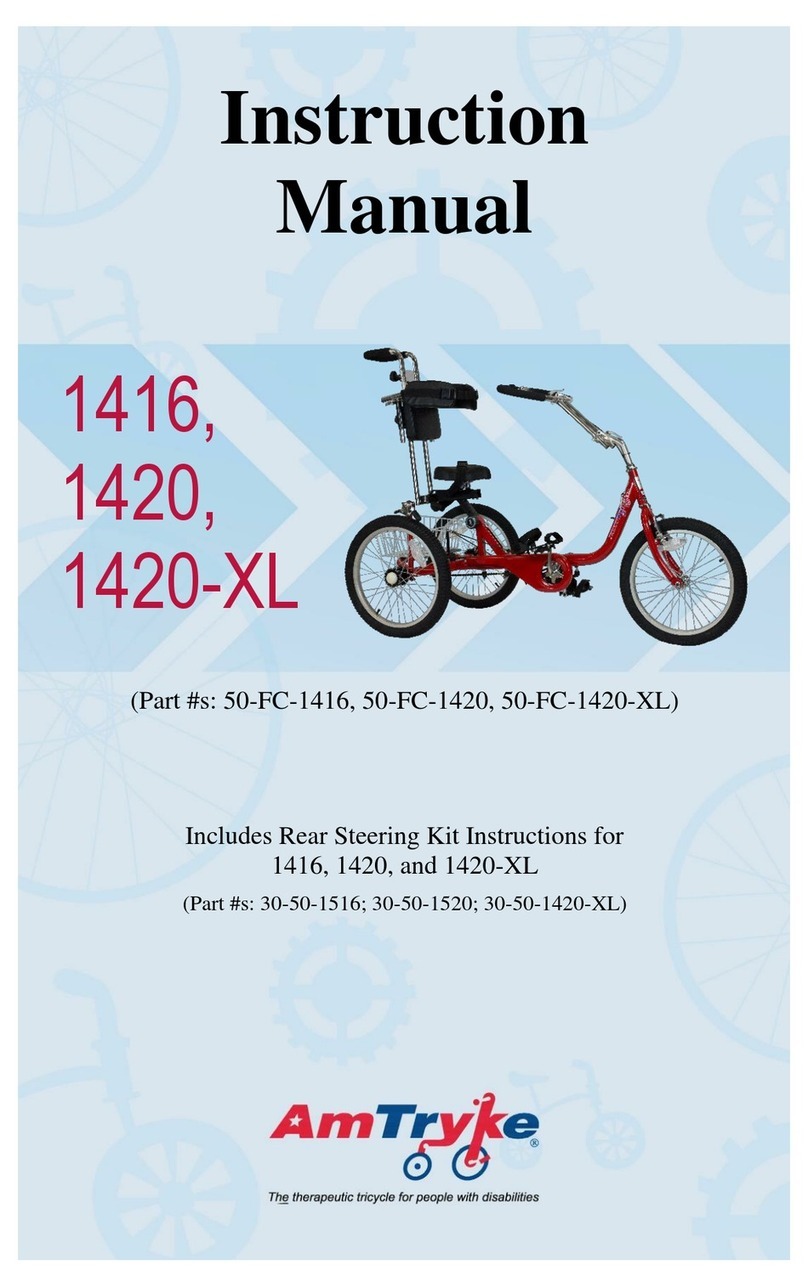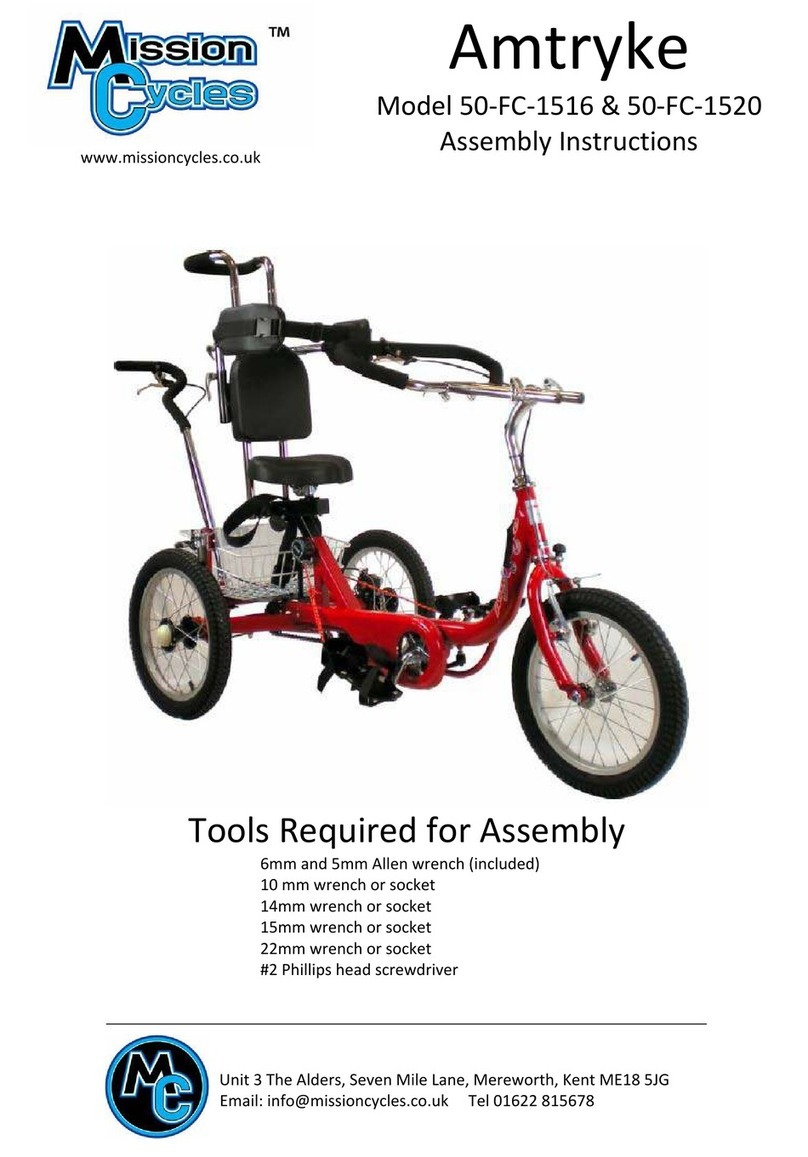
Revise Date: 8/06/09 9 of 29
5) Install handgrips, shift/rear brake goes on the right side, while the front hand brake is positioned on the left, the
right side threads in clockwise while the left side threads in counter clockwise.
6) Install the steering linkage; remove the two nuts and flat washers already installed.
7) Using a 5mm Allen wrench thread the screw through the steering stem attachment, slide one flat washer over
the exposed thread and thread the 13mm nut, tighten.
8) Slide flat washer over front screw and thread 13mm nut, use a 5mm Allen wrench and 13mm wrench or socket
to tighten.
9) Once installed, adjust steering by turning black tube adjustment rod until satisfied tryke is positioned to steer
straight ahead.
Attach Seat Frame to Main Frame
13mm nut with flat
washer.
Tighten
Steering
Stem
Stem
attachment
Steering Linkage 13mm nut and flat
washer
13mm nut and
flat washer

